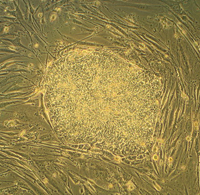 On 8 October 2011, the Court of Justice of the European Union's (CJEU) handed down a landmark judgment on the correct interpretation of Article 6(2)(c) of the Biotechnology Directive (98/44/EC) relating to the patentability of human embryonic stem cells.
On 8 October 2011, the Court of Justice of the European Union's (CJEU) handed down a landmark judgment on the correct interpretation of Article 6(2)(c) of the Biotechnology Directive (98/44/EC) relating to the patentability of human embryonic stem cells.
The Court of Justice's judgment
The decision excludes an invention from patentability where the technical teaching which is the subject-matter of the patent application requires the prior destruction of human embryos or their use as base material, whatever the stage at which that takes place and even if the description of the technical teaching claimed does not refer to the use of human embryos.
The EPO's position
Until recently, there has been a degree of uncertainty surrounding the EPO's stance on the CJEU's judgment, and whether the Office will align their practices by shifting to the more restrictive interpretation of the human embryonic stem cell exclusion. A review of the EPO's recently-revised Guidelines for Examination appears to have settled the debate. The Guidelines advise that:
A claim directed to a product, which at the filing date of the application could be exclusively obtained by a method which necessarily involved the destruction of human embryos from which the said product is derived is excluded from patentability under Rule 28(c), even if said method is not part of the claim. The point in time at which such destruction takes place is irrelevant.
The UK IPO's position
Perhaps less surprising is the reaction of the UK IPO, which, in recognizing that it is bound by the guidance provided by the CJEU, has recently issued a Practice Note for inventions involving human embryonic stem cells. The relevant passage of the Note advises that:
[T]he Office practice will now recognise that where the implementation of an invention requires the use of cells that originate from a process which requires the destruction of a human embryo, the invention is not patentable according to paragraph 3(d) of Schedule A2 [corresponding to Article 6(2)(c) of the Directive]. For example, where the implementation of the invention requires the use of a human embryonic stem cell line the establishment of which originally required the destruction of a human embryo, the invention is not patentable.
The future
The recent guidance provided by both the EPO and the UK IPO does little more than paraphrase the Decision of the CJEU. It is therefore hoped that the situation for biotech innovators operating in this area will become clearer as individual cases are deliberated by the EPO's Boards of Appeal and National Courts.
This report comes from European Patent Attorneys at WP Thompson & Co., 55 Drury Lane, London UK. Further details and commentary can be obtained from Gill Smaggasgale, a partner at the firm.